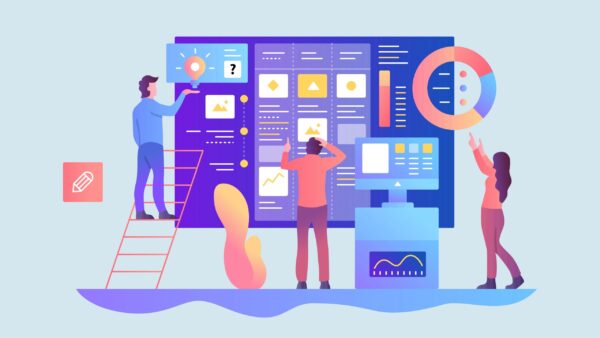The world can seem like it’s spinning faster these days. Everyone is asking for more and more deliverables at an increasing rate of speed. If your workplace is like many others, you’re also faced with accomplishing more with fewer people.
Artificial intelligence is surging as a way to replace human workers. Although not every project can be handled with AI, the technology may be the answer to help you and your team rise to new challenges.
There has never been a better time to explore using project management software to help teams do their jobs. If you haven’t taken a look lately, you should. Here’s how to determine if your team would benefit.
Does Product Development Hinge on Project Success?
Developing a new product seems to be about vision. It’s the pie-in-the-sky, bright and shiny object someone dreams up in the corner office. But what does it require to take an idea from conception to finished product?
Successful product development is the result of any number of successful projects completed on the way to that goal. Instead of viewing the two as separate processes, they should be framed in the same picture. Project management software can make that connection.
Sure, this software is focused on the life of individual projects and not on the lifetime of a new product. But the success of a new product is inexorably linked to the success of every project it took to develop it.
Somewhere at the end of the project management rainbow should be the goal of creating, building, and maintaining a successful product. Use this software to keep everyone’s eye on what the product should be. That will keep the focus on what everyone needs to do to move it there, one project at a time.
Are All Your Stakeholders Buying In?
Projects, like products, are often ideas born from the top. Achieve buy-in at the top of the hierarchy, and budgets and resources are likely to be enthusiastically invested. But what about everyone else who will be responsible for handling the work that needs to be done?
It’s largely the task of the project manager to achieve buy-in from rank-and-file talent. That’s often a challenging one, because the view from that corner office isn’t the same as everyone else’s. Stakeholder buy-in is key to project success, and that can be where project management software comes in.
Once you identify every stakeholder, talk to them about the vision and appeal to their minds and their hearts. Make individual roles personal by plugging them into the software. There, everyone can see the end goal as well as the milestones being achieved to get there.
Pride, progress, and accountability are strong motivators for peak performance. Using project management software to show that everyone’s the boss of something will help garner buy-in. Better yet, it will entice buy-in from perhaps the most important stakeholders.
Do Your Team Members Feel Empowered?
Employee empowerment is a big deal. That’s true for the team member with the smallest role in a project and the one with the largest. Are you micromanaging projects and leaving your team feeling incompetent?
Empowered team members are more confident, focused, and productive; they also make better decisions. All that leads to projects that meet timelines, budgets, and goals. Project management software is intrinsically empowering as it offers a new level of autonomy.
This software promotes collaboration among team members, even those in diverse roles. Since individual team members can see what tasks they’re responsible for in real time, there’s less checking in with you. There will be more checking in with other members of the team instead.
While they’re doing what they do, you can monitor progress and step in only when necessary. Team members are empowered by the detailed tactical roadmap they can access at any time. You’ll be empowered by having more time to focus on bigger strategies.
Is There a Repetition of Problems Among Projects?
Marketing keeps blowing the budget. The handoff between design and development is always behind schedule. Do you suffer from problem déjà vu with every project you lead?
You can look at project management software from a separate viewfinder with every project. Or you can use one viewfinder to look at the common processes among them. If you do the latter, you may be able to identify why certain issues keep arising.
Once you identify those common bumps in the road, you can figure out why they keep occurring. Once you do that, you can make adjustments and solve problems before they affect future projects. From unrealistic timelines to inappropriate team members, problems often share the same roots.
Use what project management software from one project can teach you to improve the next task. Discuss repetitive issues with your team and come up with solutions. Problems will always arise, but they should typically be new ones.
You Decide
Companies have always been built on the success of individual projects. That hasn’t changed. But how projects should be managed has.
Flow charts, weekly update meetings in the conference room, and sticky notes on a bulletin board no longer cut it. There will always be timelines, budgets, talent, and goals to be achieved. However, technology has changed how project managers and teams keep track of it all.
If you still haven’t started using project management software for your team, you’re probably doing them a disservice. Have you determined technology is the secret to smoother, more successful projects? Then get off the whiteboard and on board with a software solution.





